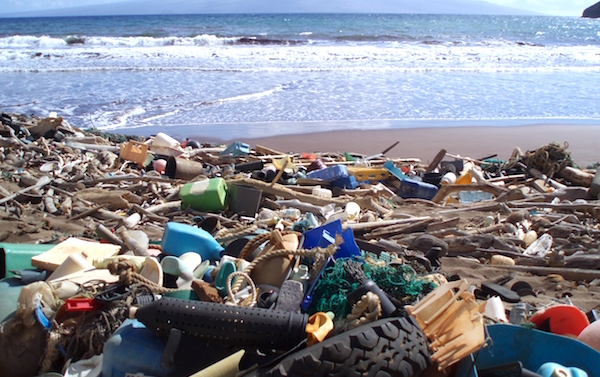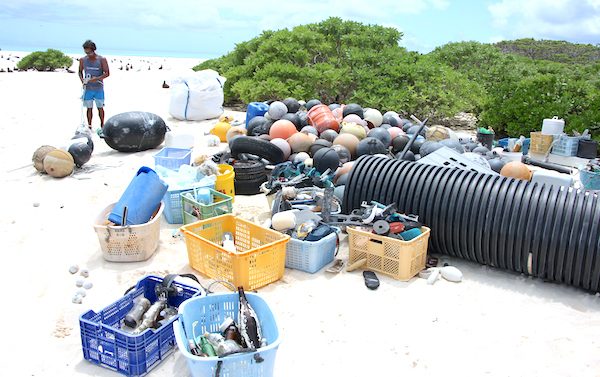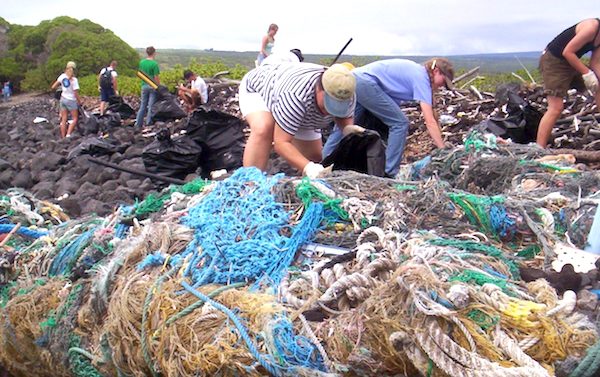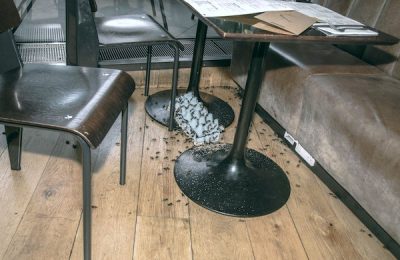Scattered debris can be found everywhere on most of the Hawaiian Islands that regularly accumulates around the archipelago. Surprisingly, most of the debris s not linked to the March 2011 earthquake and tsunami in Japan, according to a study in Hawaii.
Officials with the state Department of Land and Natural Resources said ocean currents can bring trash from as far away as the U.S. mainland and Asia to the shores of Hawaii, Phys reports. The debris, mostly plastics but also wood, household goods, fishing gear and other items, accumulates in hot spots around the islands, mostly on the north and east shores where ocean currents deposit the trash.
The Hawaiian Islands debris study did not examine individual pieces of debris to determine where they came from, but rather looked at the sizes and types of trash, as well as their locations, to determine what amount was produced by the 2011 tsunami and earthquake in Japan and what was not. An aerial survey shows that much of the debris accumulates on the shores of Hawaii from items discarded carelessly across the Pacific.
“In order to characterize the potential ecological consequences of tsunami and other debris, it’s important to quantify it,” said Kirsten Moy, the state’s marine debris coordinator. “Understanding the types, sizes and locations of debris accumulating on Hawaiian coastlines is crucial in developing plans to streamline removal and mitigate negative impacts.”
The island of Niihau had the most debris in the state with nearly 8,000 pieces of debris counted. Oahu, the state’s most populated island, had the least amount of debris with just under 1,000 pieces, most of which was found on the island’s northeastern tip, Hawaii Tribune Herald.
“This survey found a very limited amount of debris associated with the Japan tsunami,” said Suzanne Case, chairwoman of the Department of Land & Natural Resources. “Most of what was mapped is common, everyday items that someone haphazardly tossed onto the ground or directly into the water.”
The survey was paid for by the Ministry of Environment of Japan using the Japan Tsunami Gift Fund and commissioned by the Department of Land & Natural Resources and North Pacific Marine Science Organization. The 2011 magnitude-9.0 earthquake off the coast of northern Japan unleashed a massive tsunami. More than 19,000 people were killed, and power to a nuclear plant was cut off, triggering multiple meltdowns in the world’s second-worst nuclear disaster.
The National Oceanic and Atmospheric Administration (NOAA) recently removed approximately 57 tons of derelict fishing nets and plastic litter from the Papahanaumokuakea Marine National Monument’s tiny islands and atolls, sensitive coral reefs and shallow waters. A team of 17 NOAA divers helped remove 7,436 hard plastic fragments, 3,758 bottle caps, 1,469 plastic beverage bottles and 477 lighters and an 11 1/2 ton “super net.”
NOAA has led this mission every year since 1996, removing a total of 904 tons of marine debris, including this year’s haul. The 33-day mission took place from September 25 - October 27, 2014 with a crew aboard the NOAA Ship Oscar Elton Sette.
Honolulu Magazine said most of the Hawaiian Islands debris is common, everyday items that someone haphazardly tossed onto the ground or directly into the water. These items get caught up in ocean currents and unfortunately much of it eventually lands, mostly on north and east facing shores.













